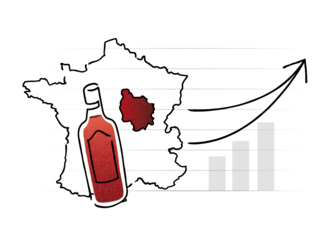Burgundy investment wines are setting the pace for the fine wine market in 2022. Building on an average 31% growth in 2021, Q1 2022 sees Burgundy investments overshadow shares.
Burgundy investments compared to financial markets in 2021
Index | Growth in 2021 |
Liv-ex Burgundy 150 | 31% |
S&P500 | 23% |
Dow Jones Industrial | 16.5% |
FTSE 100 | 8.8% |
Source: Liv-ex.com, April 2022 (Data at 31.12.2021)
In fact, Liv-ex’s Burgundy 150 index has consistently outperformed all major financial benchmarks and gold in the last year. The top performing regional fine wine measure in Q1 2022, rising 14.6%, the Liv-ex Burgundy 150 measures ten of the most recent red and white physical investment wines of the region, including six DRC vintages. It has risen 55.1% in the last two years, second only to the top performing Liv-ex Champagne 50 index’s 70.3% growth over this period.
Download Our Free Wine Investment Guide
Burgundy investments compared to financial markets and gold in Q1 2022
Index | Trend in Q1 2022 |
Liv-ex Burgundy 150 | 14.6% |
S&P500 | -3.3% loss |
FTSE 100 | 2.2% |
Gold | 6.2% |
Source: Liv-ex.com, April 2022 (Data at 31.03.2022)
Burgundy is staying bullish this year with a 4% average growth in the month of March, again, ahead of the FTSE 100’s 1.6% and gold’s 2% rise. Nine of the top ten price performers in Q1 2022 were Burgundy wines, so which wines should you be looking to invest in?
The region’s share of trade by value on the secondary market grew by 36.8% year on year in 2021, with 4,084 different wines traded on Liv-ex. Investors have more choice than ever in a much more resilient and diversified market in Burgundy’s wines.
What shapes the Burgundy market?
Supply will ever be the key factor determining price and access for investors due to the very low production levels for Burgundy’s investment wines. Where Bordeaux First Growth, Lafite Rothschild has an average production of 16,000 cases each year, Burgundy’s Leroy, ranked by Liv-ex as the most powerful fine wine brand in 2021 and other recent years, produces around just 600.
Which are the most traded Burgundy investment wines?
The top five Burgundy growers’ wines traded on Liv-ex in 2021 (by value) were Domaine de la Romanée Conti (23.9%), Domaine Leroy (9.6%), Domaine Armand Rousseau (8%), Domaine Ponsot (6.3%) and Maison Leroy (5.1%).
The great DRC and Leroy brands’ common denominator is Burgundy’s leading lady, Madame Lalou Bize-Leroy. A co-owner (25%) and former director of Domaine de la Romanée Conti, Lalou Bize-Leroy founded Domaine Leroy in Vosne Romanée in 1988 with the purchase and renaming of Domaine Charles Nöellat. With vineyards in Richebourg, Romanée St Vivant, Clos de Vougeot and other communes, Madame Bize-Leroy has established, from 23 hectares of vines, a dynasty of great wines now recognised around the world as some of the most highly prized of the region.
In terms of price performance Domaine Leroy wines have seen outstanding growth, for example Domaine Leroy Nuits St Georges 2001 has seen 2010% growth since release in 2006 and 1845% in the last five years on Liv-ex. Perhaps more typically Leroy wines will show average two-year growth in excess of 50%, with some delivering considerably higher returns. Certainly, gains that compare well with most equities with the added benefit of exemption from Capital Gains Tax, subject to personal circumstances.
In Q1 2022 top performing Burgundies include Domaine Leflaive Batard-Montrachet 2012, rising 76.3%, Domaine Bonneau du Martray, Corton Charlemagne 2014 up 56.2% and Domaine de la Romanée Conti, Grands Echezaux 2008 increasing by 52.1%.
Burgundy is the leading wine investment region for price performance and is now more accessible to wine investors as the market has broadened to see more labels traded on the secondary market at lower entry points, seeing strong growth and delivering desirable returns to investors.
For more information on investing in Burgundy and current opportunities, speak to a member of our specialist team on 0203 384 2262.

